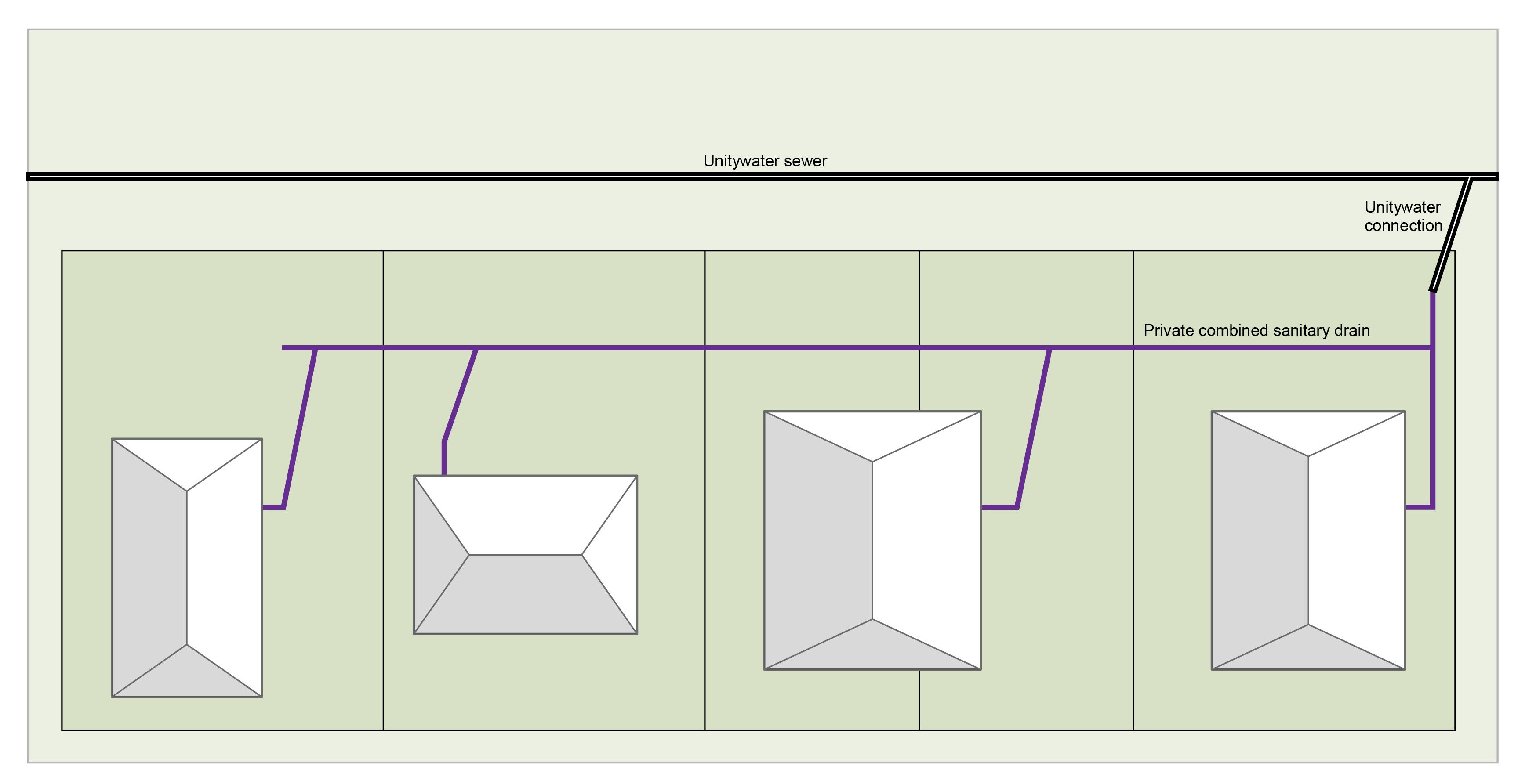Combined sanitary drains
A combined sanitary drain is shared by two or more properties to one common Unitywater sewer connection point.
A sanitary drain is the pipe that removes your wastewater from your property to the Unitywater sewerage network. For example, your toilet and kitchen sink drain. Usually your property connects to the Unitywater sewerage network from pipes only on your property.
A combined sanitary drain is a sanitary drain shared by two or more properties to one common Unitywater sewer connection point. This means each property doesn’t have a separate connection to the sewer main.
One property on the combined sanitary drain usually has a Unitywater sewer connection. A private drain runs through the property and the neighbouring properties. This creates a shared connection to the Unitywater sewer main.

These combined sanitary drains were mostly built in the 1930 – 40s. Owners of the connected properties had combined sanitary drain agreements between them.
Is my property on a combined sanitary drain?
Contact Council’s Plumbing Services to find out about your sanitary drainage. Copies of sanitary drainage plans may be available from Council records.
Maintenance responsibilities
Maintenance is the owner’s responsibility of the properties connected to the drain. You must keep the drain in good condition and operating properly. Any defects must be rectified by the owner of the property that contains the defective section of a drain.
For details refer to requirements of the Plumbing and Drainage Act 2018 s70.
Changing my sewer connection
You need to make a connection application to change your sewer connection. To change your sewer connection from a combined sanitary drain, each associated property must make a connection application. Changing to separate connections must not impact any of the properties using the combined sanitary drain. The applicant of the sewer connection application is responsible for all costs and permissions required to transition from a combined drain.
For further information relating to new sewer connections contact Unitywater.
Work associated with a combined sanitary drain requires a plumbing permit. Refer to Plumbing and Drainage Regulation 2019 Schedule 1 Part 1.
Building work, renovation or new developments
When designing your build, it’s important to know the location of sewer pipes, water pipes and easements.
This will help you avoid any costly damage to sewer infrastructure during construction. It also will assist for maintenance or if you need emergency repairs.
An engineer can help you review your plans and how they impact the property’s sewer connection. They can also estimate costs of required works.
Building over sewerage infrastructure can be problematic, even if it is landscape work. In the case of a combined sanitary drain, work can also affect associated properties.
Upfront advice can save you time. By seeking advice in the early stages of a proposal, you can ensure you address all identified development issues. Find out more about our development advice services.
Combined sanitary drains and plumbing assessment
Assessment of Plumbing and Drainage Work applications depend on:
- the nature of the work and
- the apportioned fixture unit loading for each property.
The discharge capacity or maximum volume of wastewater that the drain can handle depends on its size.
Contact Council’s Plumbing Services for more information
